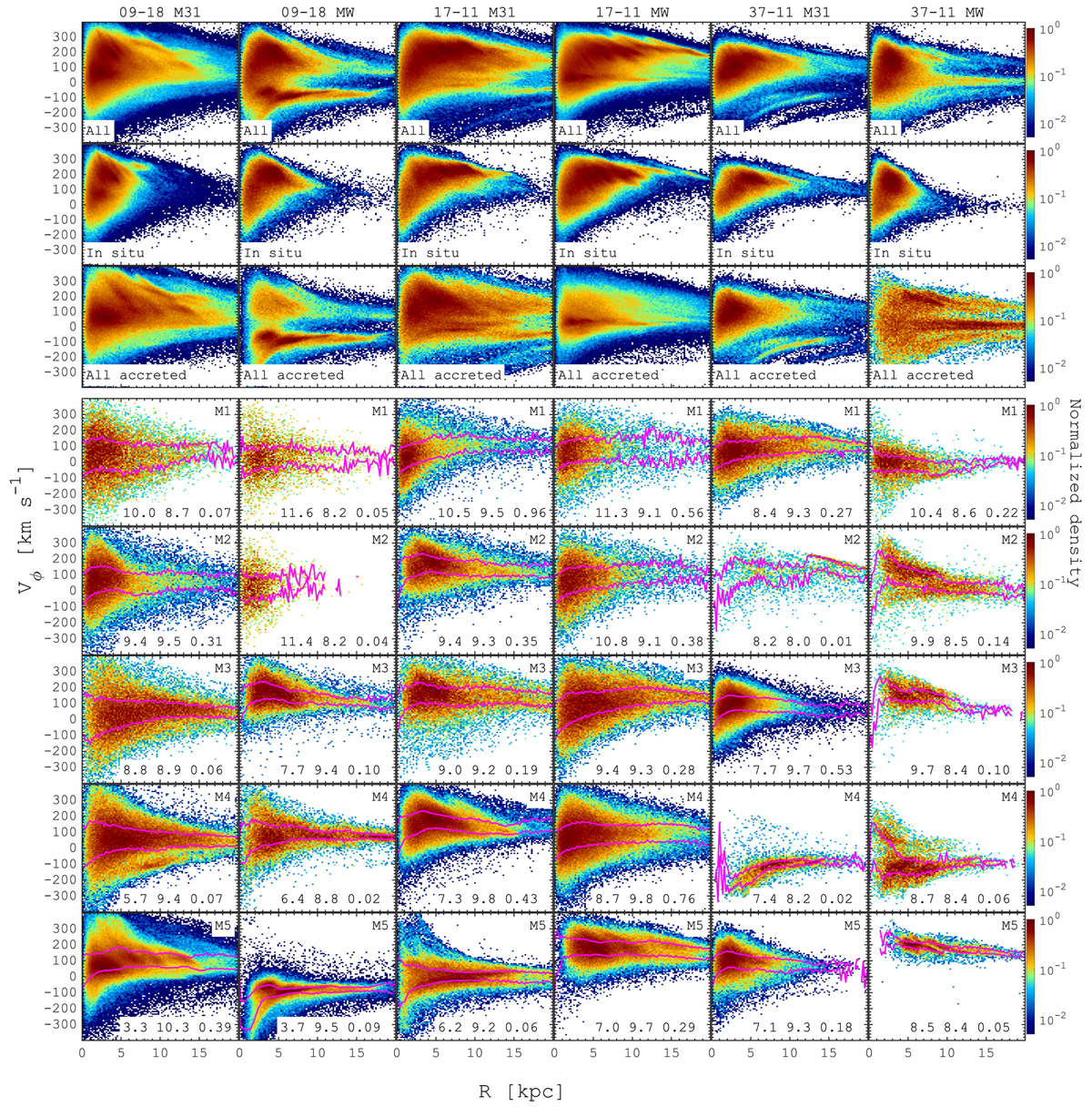Fig. 10.

Download original image
Radial structure of the azimuthal velocity distribution. Different stellar populations are shown: all stars (first row), in situ (second) and accreted populations (third row) taken > 1 kpc away from the galactic plane. All other rows below (fourth to eighth) correspond to the most significant merger remnants. The merger accretion lookback time (Gyr), the total stellar mass of the merger debris at the time of the merger (log10(M*/M⊙)), and the stellar mass ratio (μ*) relative to the main M31/MW progenitor at the time of the merger are given at the bottom of each panel. Magenta lines in the individual merger debris distribution show the dispersion level along the radius. The in situ stars rotate faster around the galactic centre and show the presence of diagonal ridges similar to those discovered in the MW (Antoja et al. 2018), which are likely to be the manifestation of spiral arms (Khoperskov & Gerhard 2022) and/or bar resonances (Fragkoudi et al. 2019). The accreted stars depict a number of radially extended structures with no net rotation and multiple co-rotating and counter-rotating components and small-scale overdensities. The important feature of the individual merger debris is that the azimuthal velocity dispersion remains nearly constant along the galactocentric distance, except for the innermost parts of the galaxies.
Current usage metrics show cumulative count of Article Views (full-text article views including HTML views, PDF and ePub downloads, according to the available data) and Abstracts Views on Vision4Press platform.
Data correspond to usage on the plateform after 2015. The current usage metrics is available 48-96 hours after online publication and is updated daily on week days.
Initial download of the metrics may take a while.


